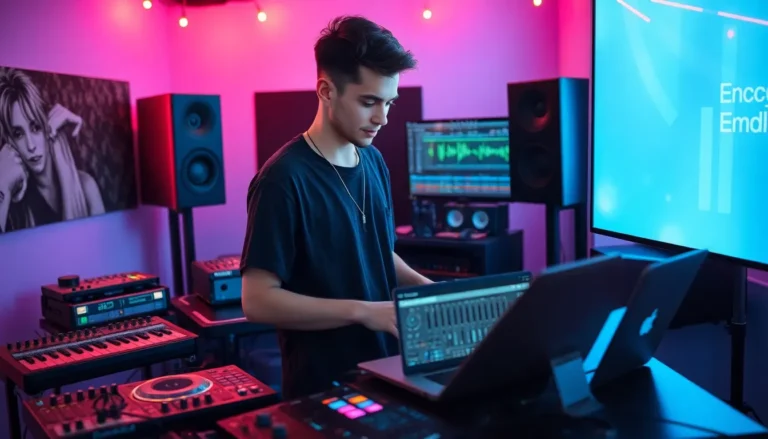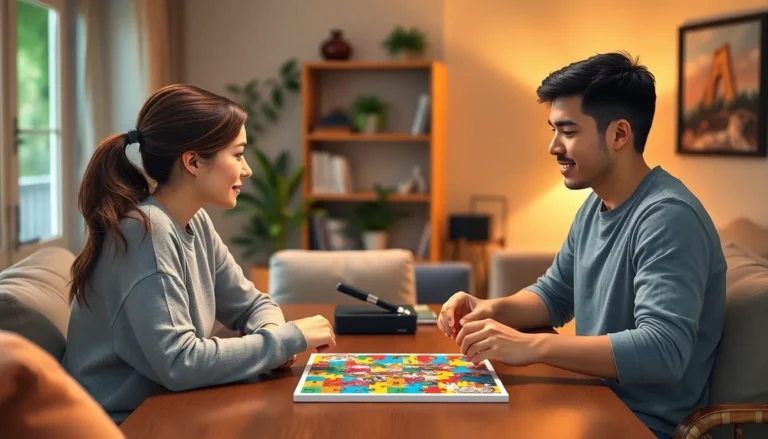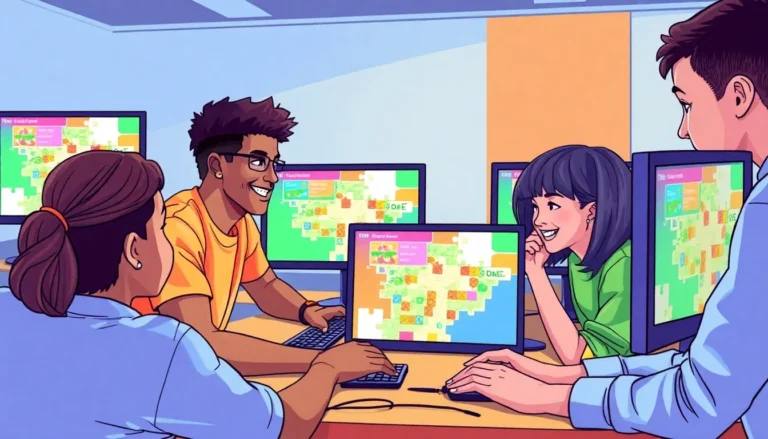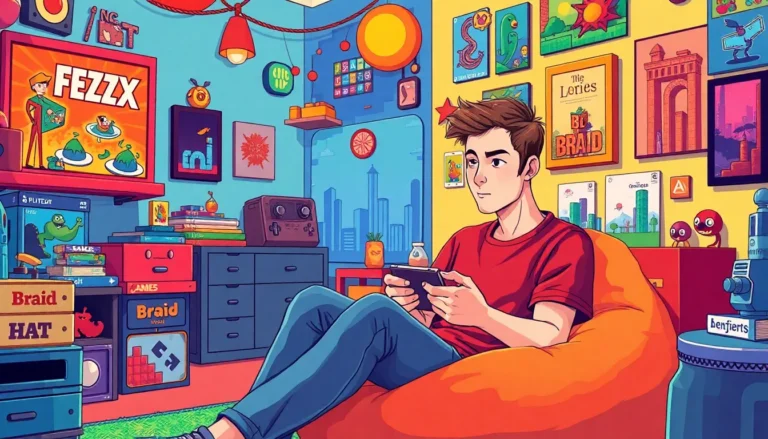Connect the dots puzzles have captivated minds for generations, offering a delightful blend of creativity and problem-solving. These simple yet engaging activities invite participants to connect numbered dots in a specific order, revealing a hidden image. For children, they serve as a fun way to develop fine motor skills and number recognition while sparking imagination.
But connect the dots puzzles aren’t just for kids. Adults can also find joy in these puzzles, using them as a relaxing escape from the daily grind. Whether enjoyed individually or as a group activity, they foster focus and concentration. Dive into the world of connect the dots and discover how this timeless pastime can provide both entertainment and cognitive benefits.
Table of Contents
ToggleOverview of Connect The Dots Puzzles
Connect the dots puzzles consist of numbered dots arranged in a sequence. Players connect each dot using straight lines to reveal a hidden image. This activity fosters critical thinking and problem-solving skills, especially for children learning to follow sequential order.
These puzzles come in various difficulty levels. Simple puzzles with fewer dots cater to younger children, while complex puzzles challenge older kids and adults. Many puzzles feature themes such as animals, seasons, and celebrations, enhancing engagement and interest.
Cognitive benefits associated with connect the dots puzzles include improved hand-eye coordination, fine motor skills, and visual-spatial awareness. Engaging with these puzzles encourages concentration and boosts memory retention. Adults often use these puzzles for relaxation, allowing for meditative focus without the pressure of competition.
Connect the dots puzzles have a universal appeal, making them suitable for play in various settings, including educational environments, family gatherings, and casual solo activities. Their versatility keeps them relevant across generations, combining fun with developmental advantages.
Benefits of Connecting The Dots
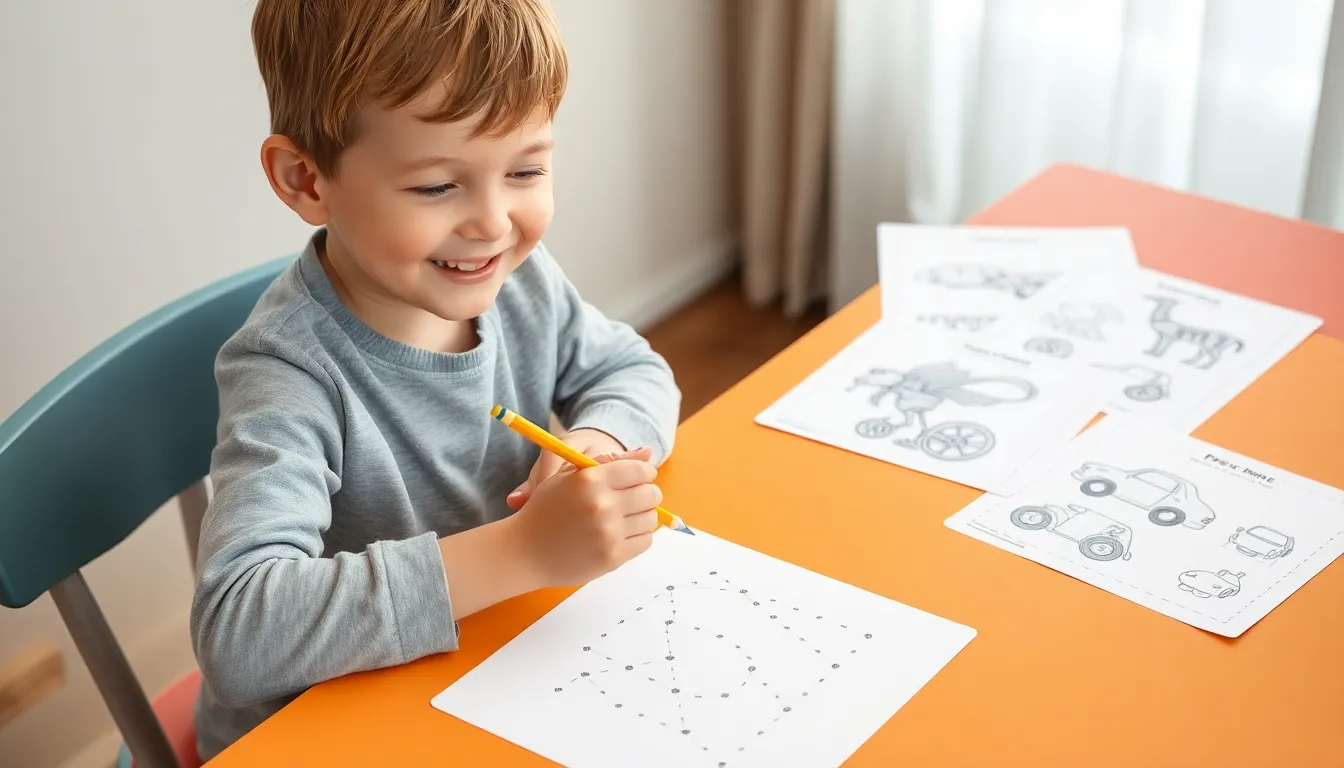
Connecting the dots puzzles offer numerous benefits, enhancing cognitive abilities and fine motor skills. Engaging in these activities contributes to overall personal development for both children and adults.
Cognitive Development
Cognitive development flourishes through connect the dots puzzles. These puzzles stimulate critical thinking, enabling problem-solving and logical sequencing. Children learn to recognize numbers in ascending order, while adults sharpen attention to detail. Regular practice enhances memory retention and visual-spatial awareness, foundational skills critical for academic success. With different themes and complexity levels, these puzzles adapt to diverse interests, making cognitive enhancement accessible for all ages.
Fine Motor Skills
Fine motor skills improve significantly through connect the dots puzzles. The act of drawing lines from one dot to another requires hand-eye coordination, strengthening muscle control in the hands and fingers. Children practicing these puzzles gain precision and dexterity, essential for writing and other manual tasks. Adults benefit from continued hand coordination, promoting ease in daily activities. Engaging in these puzzles serves as a practical exercise for maintaining fine motor abilities across a lifespan.
Types of Connect The Dots Puzzles
Connect the dots puzzles come in various forms, catering to different skill levels and interests. They range from simple designs for beginners to intricate patterns for advanced players.
Simple Puzzles for Beginners
Simple puzzles consist of fewer dots, typically numbering from 1 to 30. These puzzles feature basic shapes, such as animals or everyday objects. They focus on helping young children build foundational skills like number recognition and fine motor control. For instance, a simple puzzle might depict a cat, allowing children to engage easily while developing hand-eye coordination. Additionally, these puzzles often use large dots with clear numbering, providing a smooth introduction to the connect the dots activity.
Advanced Puzzles for Experts
Advanced puzzles present intricate designs that include 50 or more dots, often featuring detailed images or complex patterns. These puzzles challenge older children and adults, enhancing critical thinking and concentration. For example, an advanced puzzle might illustrate a scenic landscape or a detailed character from a favorite story. The complexity encourages players to exercise patience and attention to detail, refining their skills further. Often, these puzzles also incorporate themes with higher artistic value, appealing to those seeking greater artistic expression and mental stimulation.
How to Solve Connect The Dots Puzzles Effectively
Solving connect the dots puzzles effectively involves using specific strategies and avoiding common mistakes. These approaches enhance enjoyment and success while engaging with these timeless activities.
Strategies for Success
- Start from the lowest number: Begin connecting the dots in ascending numerical order. This method simplifies the process, making it easier to visualize the final image.
- Check for patterns: Look for recognizable shapes or patterns within the dots. Identifying these can provide hints about the overall design and make connections more intuitive.
- Use a light touch: Apply light pressure when connecting dots. This approach minimizes disruptions to the paper, preserving the integrity of the image and enhancing overall clarity.
- Take breaks: If frustration arises, step away briefly. This pause can clear the mind, allowing for renewed focus and more effective problem-solving when returning to the puzzle.
- Work in sections: Break the puzzle into smaller segments, completing one section at a time. This tactic helps manage complexity and fosters a sense of accomplishment as each part is finished.
Common Mistakes to Avoid
- Skipping numbers: Avoid connecting dots out of numerical order. Skipping digits can result in confusing images and misinterpretation of the intended design.
- Rushing through: Taking time is essential for accurate connections. Speeding through can lead to errors and diminish enjoyment.
- Overlooking details: Focus on small details instead of large areas. Missing finer points can obscure the final picture, detracting from the overall experience.
- Neglecting to visualize the outcome: Failing to imagine the completed artwork may hinder the connecting process. Visualizing the finished product can guide connections.
- Using the wrong tools: Select appropriate writing instruments. Using pens or pencils that bleed can disrupt the clarity of the image, while dull tools lead to frustration.
Connect the dots puzzles offer a unique blend of entertainment and cognitive development for all ages. Their ability to enhance fine motor skills and critical thinking makes them an invaluable tool for children while providing a relaxing pastime for adults. The variety in difficulty levels and themes ensures that there’s a puzzle for everyone, fostering creativity and focus. Engaging with these puzzles not only sharpens attention to detail but also promotes a sense of accomplishment as hidden images come to life. Embracing connect the dots puzzles can lead to lasting benefits that enrich both personal and shared experiences.




